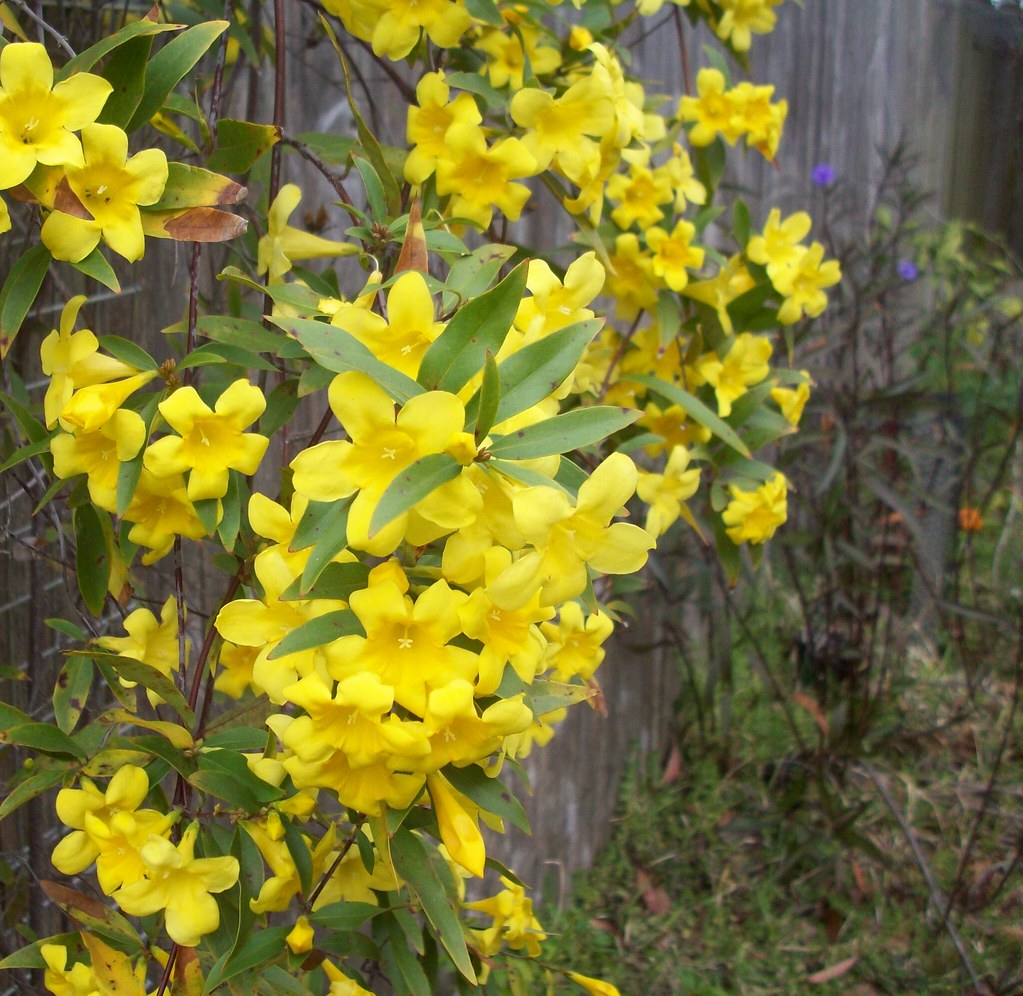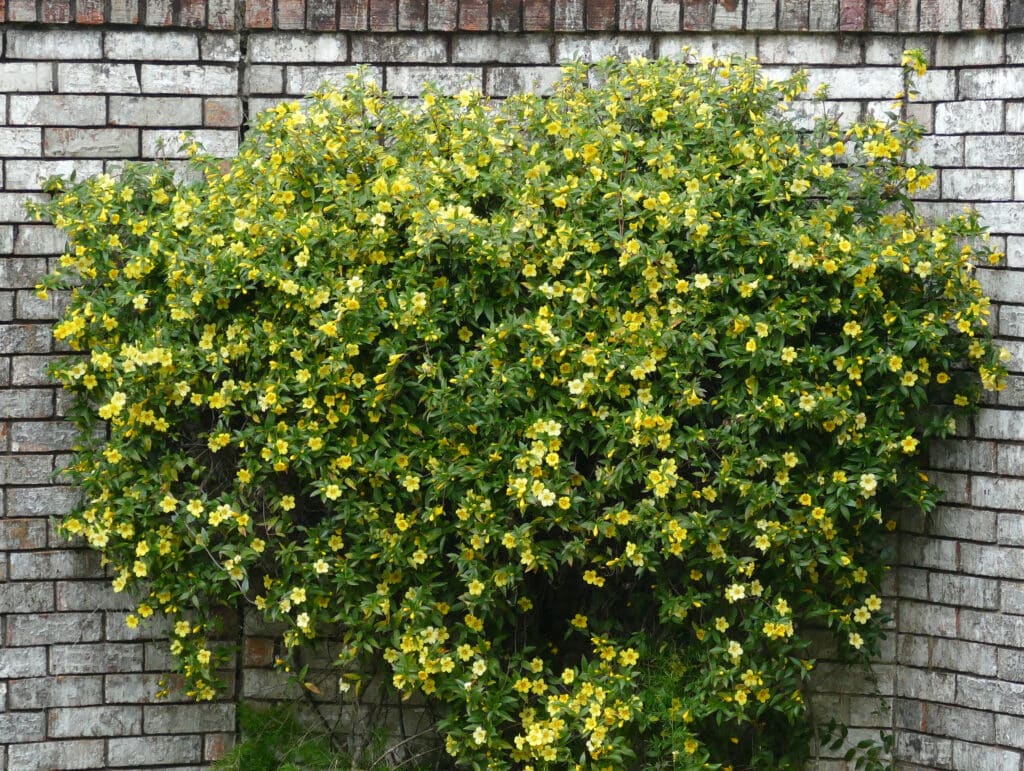South Carolina State Flower: Carolina Jessamine

Carolina Jessamine is the state flower of South Carolina. This evergreen vine blooms in late winter or early spring and is known for its bright yellow, trumpet-shaped flowers that climb trees, fences, and latticework all over the state.
Characteristics
Carolina Jessamine is a vigorous, evergreen vine that can climb up to 20 feet high. Its delicate, fragrant, trumpet-shaped flowers bloom in late winter or early spring, filling the air with their sweet scent. The flowers are typically bright yellow and grow in clusters of 3 to 12.
Carolina Jessamine loves the sun and can grow quite fast given plenty of space and moist, well-drained soil. The plant’s glossy leaves are leathery and lance-shaped, providing an attractive backdrop for the cheerful flowers.
History and Symbolism
Carolina Jessamine has a long and fascinating history as the state flower of South Carolina. In 1924, the General Assembly of South Carolina selected the Carolina Jessamine as the official flower of the state. The General Assembly chose the flower because of its indigenousness to the state, its fragrance, and its association with spring and loyalty to the state.

Being one of the earliest flowers to bloom in the Spring, the Carolina Jessamine is also a symbol of hope for the coming warm weather. It was chosen due to its delicate beauty and symbolism of loyalty and patriotism.
The selection of the Carolina Jessamine was a significant event for the state, as it was the first time a state flower had been officially recognized in South Carolina. The decision was widely celebrated, and the Carolina Jessamine has been cherished as a symbol of the state ever since.
Toxicity and Uses
Despite its delicate beauty, Carolina Jessamine’s flowers, leaves, and stems are poisonous. All parts of the plant contain toxic alkaloids, which can cause a range of symptoms, including vomiting, diarrhea, and, in severe cases, coma and death.
Native American tribes historically used Carolina Jessamine extract as a remedy for malaria and other fever diseases. Today, the essential oils of Carolina Jessamine are extracted and used in perfumes and fragrances.

Wildlife Interaction
The Carolina Jessamine is an important source of food for a variety of pollinators, including bees, butterflies, and moths.
While the nectar of Carolina Jessamine contains alkaloids that can be toxic to honeybees, other invertebrates such as bumblebees and some butterflies are able to safely visit and feed on the flowers.
The plant’s toxicity repels herbivores that would eat the blossom before a seed could be produced. As a result, the Carolina Jessamine is an important plant for preserving local ecosystems and promoting biodiversity.
Cultivation and Landscaping
Carolina Jessamine is a great option for those looking to add a touch of vibrant color and fragrance to their garden without too much effort.
As an evergreen vine, it requires minimal maintenance and can thrive in full sun or partial shade, making it a versatile plant for any landscape. It prefers to grow in well-drained soils that are slightly acidic, and it can tolerate a wide range of moisture conditions, from moist to dry.
The plant’s natural range extends from Virginia to Florida and west to Texas, although it is more commonly found in the southeastern coastal plain. It is considered an important plant species in the region, providing habitat and food for a variety of native wildlife, including pollinators and birds.
Plant Carolina Jessamine in the fall, as this allows the plant to establish its root system before the harsh winter months. It is also important to provide the plant with enough space to grow, as it can quickly grow out of control if left unchecked.

One unique feature of Carolina Jessamine is that it can be trained to grow as a ground cover along a steep slope. This is because the vine has the ability to climb and cling onto any nearby structure, making it an excellent choice for landscaping hilly areas.
However, be mindful of the plant’s toxicity when deciding on a location for planting. Carolina Jessamine should not be planted in areas where it can grow too close to human or animal activity, as the flowers, leaves, and stems are poisonous if ingested. It is also recommended to wear gloves when handling the plant to avoid any allergic reactions.
Overall, with its vibrant yellow blooms and sweet fragrance, Carolina Jessamine is a stunning addition to any landscape. As long as it is planted in a suitable location and given proper care, it can provide years of beauty and enjoyment.
Conclusion
Carolina Jessamine is a beautiful and symbolic flower native to the state of South Carolina. Its delicate beauty and association with spring and loyalty make it a fitting state flower.
Whether you’re a resident or a visitor to South Carolina, take a moment to appreciate the vibrant and symbolic beauty of Carolina Jessamine, especially if you’re visiting while it’s in bloom. Just don’t forget that it’s poisonous!